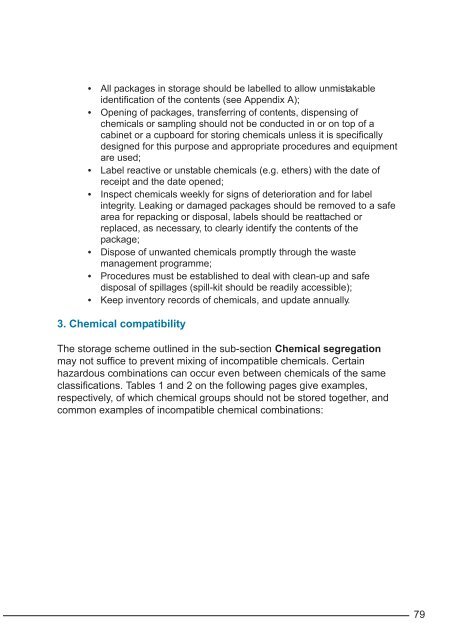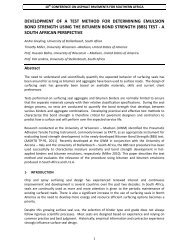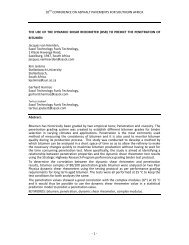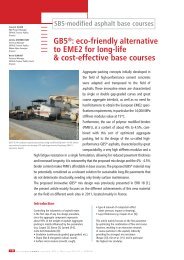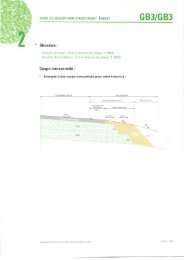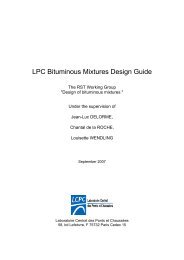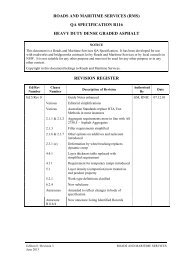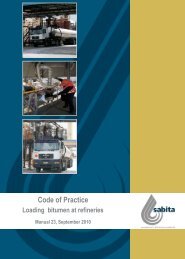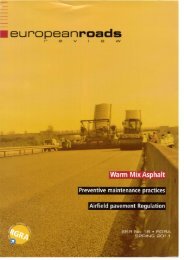Guide to the safe handling of solvents in a bituminous ... - Aapaq.org
Guide to the safe handling of solvents in a bituminous ... - Aapaq.org
Guide to the safe handling of solvents in a bituminous ... - Aapaq.org
- No tags were found...
Create successful ePaper yourself
Turn your PDF publications into a flip-book with our unique Google optimized e-Paper software.
• All packages <strong>in</strong> s<strong>to</strong>rage should be labelled <strong>to</strong> allow unmistakableidentification <strong>of</strong> <strong>the</strong> contents (see Appendix A);• Open<strong>in</strong>g <strong>of</strong> packages, transferr<strong>in</strong>g <strong>of</strong> contents, dispens<strong>in</strong>g <strong>of</strong>chemicals or sampl<strong>in</strong>g should not be conducted <strong>in</strong> or on <strong>to</strong>p <strong>of</strong> acab<strong>in</strong>et or a cupboard for s<strong>to</strong>r<strong>in</strong>g chemicals unless it is specificallydesigned for this purpose and appropriate procedures and equipmentare used;• Label reactive or unstable chemicals (e.g. e<strong>the</strong>rs) with <strong>the</strong> date <strong>of</strong>receipt and <strong>the</strong> date opened;• Inspect chemicals weekly for signs <strong>of</strong> deterioration and for label<strong>in</strong>tegrity. Leak<strong>in</strong>g or damaged packages should be removed <strong>to</strong> a <strong>safe</strong>area for repack<strong>in</strong>g or disposal, labels should be reattached orreplaced, as necessary, <strong>to</strong> clearly identify <strong>the</strong> contents <strong>of</strong> <strong>the</strong>package;• Dispose <strong>of</strong> unwanted chemicals promptly through <strong>the</strong> wastemanagement programme;• Procedures must be established <strong>to</strong> deal with clean-up and <strong>safe</strong>disposal <strong>of</strong> spillages (spill-kit should be readily accessible);• Keep <strong>in</strong>ven<strong>to</strong>ry records <strong>of</strong> chemicals, and update annually.3. Chemical compatibilityThe s<strong>to</strong>rage scheme outl<strong>in</strong>ed <strong>in</strong> <strong>the</strong> sub-section Chemical segregationmay not suffice <strong>to</strong> prevent mix<strong>in</strong>g <strong>of</strong> <strong>in</strong>compatible chemicals. Certa<strong>in</strong>hazardous comb<strong>in</strong>ations can occur even between chemicals <strong>of</strong> <strong>the</strong> sameclassifications. Tables 1 and 2 on <strong>the</strong> follow<strong>in</strong>g pages give examples,respectively, <strong>of</strong> which chemical groups should not be s<strong>to</strong>red <strong>to</strong>ge<strong>the</strong>r, andcommon examples <strong>of</strong> <strong>in</strong>compatible chemical comb<strong>in</strong>ations:79


